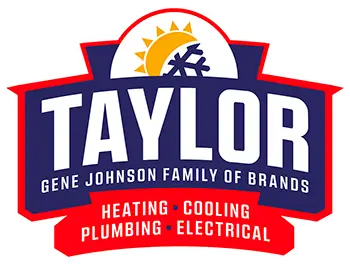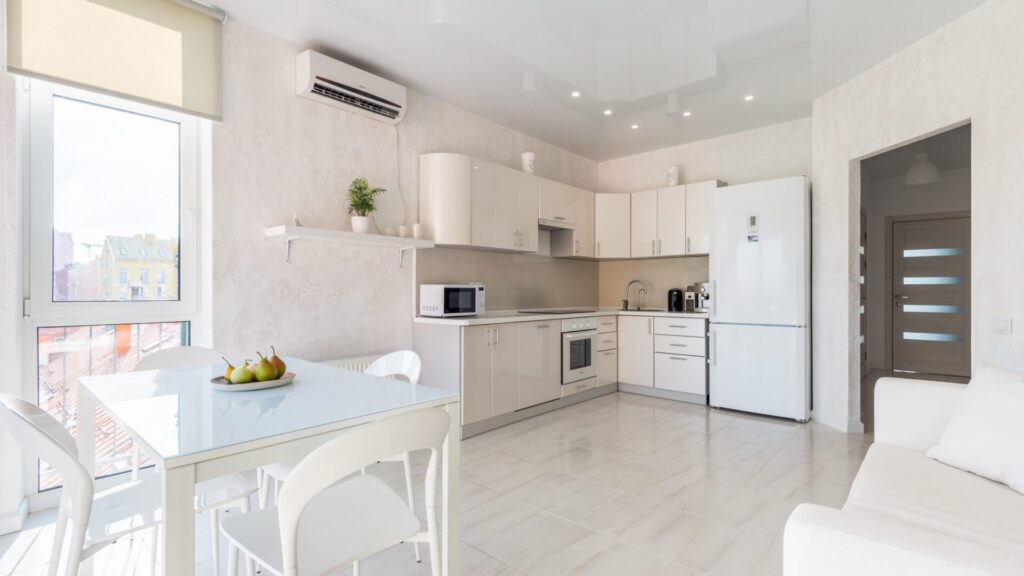We all love a cool, comfortable home, especially during those hot summer months. But let’s face it, constantly running your air conditioner can lead to some hefty utility bills.
That’s why we at Taylor Heating and Air Conditioning encourage our customers to equip themselves with information that can help them beat the heat, without breaking the bank.
An important piece of information to know is the concept of SEER ratings. The concept might sound technical, maybe even a bit intimidating, but we assure you it’s not.
Once you understand what SEER is and why it’s important, it can fundamentally change the way you view and use your cooling system.
So, let’s dive in, shall we?
What is SEER Rating, Exactly?
A SEER rating tells you how much cooling you’re getting for your money, or more technically, for each unit of energy consumed by your AC or heat pump.
SEER stands for Seasonal Energy Efficiency Ratio.
It is a measure of an air conditioner or heat pump’s efficiency over a typical cooling season. A higher SEER rating means greater energy efficiency.
Why Is It Important?
Understanding SEER ratings gives you more control over your home’s comfort and efficiency.
For instance, say your old air conditioner has a SEER rating of 9 (common for models installed before 2005), and you’re considering replacing it with a new AC with a SEER rating of 16 (the standard for many modern models).
While the upfront cost of the new AC might make you hesitate, consider this: an AC with a SEER of 16 is nearly twice as efficient as one with a SEER of 9.
That means for the same amount of cooling, the new AC could potentially cut your cooling costs by half.
The Forces Behind SEER Ratings
Although SEER ratings may appear to be static figures, they are actually the product of numerous factors. Understanding these factors is crucial since they have a big impact on the cooling system’s actual efficiency.
Technological Advancements
Modern air conditioners and heat pumps come equipped with advanced features that contribute to a higher SEER rating.
Variable-speed fans are one such technological marvel. Traditional AC units have fans that operate at a single speed – full throttle.
But, variable-speed fans can adjust their speed to the cooling needs of your home, ensuring no energy is wasted when full cooling power isn’t required.
Similarly, improvements in coil design have enabled more effective heat transfer, contributing to higher efficiency.
Imagine the coils as highways – the more efficient they are, the faster heat can travel out of your home, making you cooler, quicker.
Programmable thermostats are another innovation that has boosted SEER ratings.
These devices allow you to set your AC or heat pump to operate less during times when you’re away or when cooling demand is lower, such as at night.
Climate Conditions
However, not all factors influencing SEER ratings are within our control. Climate plays a critical role in the efficiency of cooling systems.
For example, an air conditioner in a hot, dry desert climate may not operate as efficiently as in a milder climate.
Humidity levels in your home also play a role. Higher humidity levels can make it harder for an AC unit to cool your home, potentially impacting its real-world efficiency.
So, while the SEER rating is a measure of a unit’s maximum efficiency under ideal conditions, your actual efficiency may vary based on these influencing factors.
Cooling System Categories
When shopping for an air conditioner or heat pump, you’ll come across units categorized based on their SEER ratings.
Here’s a closer look at each of these categories:
Entry-Level Efficiency
The SEER ratings for air conditioners and heat pumps in this category are typically 13 to 15. They are entry-level models that provide acceptable cooling at a cheaper starting cost.
The caveat is that they use more energy to chill your house. This could eventually result in higher utility costs.
It’s an appropriate choice for homeowners who sparingly use their air conditioners or who are on a budget.
Mid-Efficiency
Mid-efficiency units are a step up, boasting SEER ratings between 16-19.
While they come with a slightly higher price tag, they offer better energy efficiency.
They’re a great middle-ground for those looking for a balance between upfront cost and long-term energy savings.
High Efficiency
High-efficiency units are the crème de la crème of cooling systems, boasting impressive SEER ratings of 20 or above. They incorporate the latest technologies to maximize energy efficiency.
While they have the highest initial costs, they provide the most significant savings in energy costs over time.
It’s a great choice if you’re keen on maximizing your home’s HVAC efficiency and minimizing your environmental impact.
Benefits of a Higher SEER Rating
Owning an AC or heat pump with a higher SEER rating has numerous benefits:
- Lower Utility Costs: High SEER-rated systems are more energy-efficient, resulting in lower electricity bills.
- Uniform Cooling: They provide more consistent temperatures across your home.
- Extend Equipment Lifespan: Higher SEER ratings extend your HVAC’s lifespan significantly due to its efficiency and optimized settings.
- Increased Comfort: These systems often feature advanced technology that can improve indoor air quality and control humidity.
- Government or Manufacturer Incentives: You may qualify for rebates or tax credits.
- Reduce Carbon Footprint: By consuming less energy, they help in reducing greenhouse gas emissions.
What Are the National SEER Standards?
In an effort to promote energy efficiency and reduce environmental impact, the U.S. Department of Energy (DOE) has established regulations regarding the minimum SEER ratings for new residential air conditioning units.
Across the country, the baseline is set at a SEER rating of 14.
However, it’s important to remember that these standards can vary based on geographical location.
The DOE has divided the country into three regions – North, Southeast, and Southwest. These regions have different minimum SEER requirements due to their distinct climate conditions.
For residents of Puyallup, Washington, which falls under the North region, the DOE requires new residential AC units to have a minimum SEER rating of 13.
This is because the North region tends to have milder summers, and therefore lower cooling demands, compared to the Southeast and Southwest regions.
While these are the minimum standards, homeowners can certainly choose to invest in units with higher SEER ratings for enhanced energy efficiency and savings.
SEER vs EER: What’s the Difference?
There are two common abbreviations that come up when discussing cooling system efficiency: SEER and EER. While both are important metrics, they are used to assess efficiency under different conditions.
As we’ve covered, Seasonal Energy Efficiency Ratio (SEER) is a measure of a system’s efficiency over the course of a full cooling season. It’s an average score that takes into account the wide range of summer temperatures and humidity levels that an individual system could endure.
However, EER (which stands for “energy efficiency ratio”) evaluates performance during “peak day conditions,” or 95°F ambient temperature. It gives you an idea of how well your system will function at the warmest times of the year.
While both ratings are significant, SEER may be more applicable in places where hot summers are the exception rather than the rule. Meanwhile, EER can be a helpful resource for people who are permanently based in warmer regions where extreme weather is more frequent.
What’s a Good SEER Rating for Air Conditioners?
Now, you might be wondering:
What’s a good SEER rating for an air conditioner?
Generally, you’d want something that has a SEER rating of 14 to 16. These systems provide a good balance of efficiency and affordability.
However, if you live in a hotter climate where the AC runs almost all day or if you’re interested in more eco-friendly options, units with SEER ratings of 20 or above might be more suitable.
What’s a Good SEER Rating for Heat Pumps?
When it comes to heat pumps, the principles are pretty much the same. A SEER rating of 14-16 is generally considered good and offers a decent level of efficiency for most homes.
For those who prioritize high efficiency or live in warmer climates where the heat pump is used extensively for cooling, units with SEER ratings over 20 are the top tier.
Professional AC and Heat Pump Installation/Replacement
While seasonal energy efficiency ratios (SEERs) are useful for comparing different air conditioners, keep in mind that these numbers don’t tell the whole story when it comes to actual performance.
For optimal efficiency and longevity, both proper installation and regular maintenance are essential.
A poorly installed AC unit or heat pump can lead to decreased efficiency, uneven cooling, frequent breakdowns, and a shorter lifespan, regardless of its SEER rating.
This is where the skilled technicians at Taylor Heating and Air Conditioning come in.
Choose Taylor Heating and Air Conditioning Today!
Whether you need professional advice about the best SEER rating for your home or require reliable installation services for a traditional or ductless HVAC system—you can trust our team of experts for the job!
We’re here to guide you toward solutions that meet your requirements for comfort, energy efficiency, and financial restraints. Get our professional cooling and indoor air quality services today!
Call (253) 208-5315 to make an appointment.

